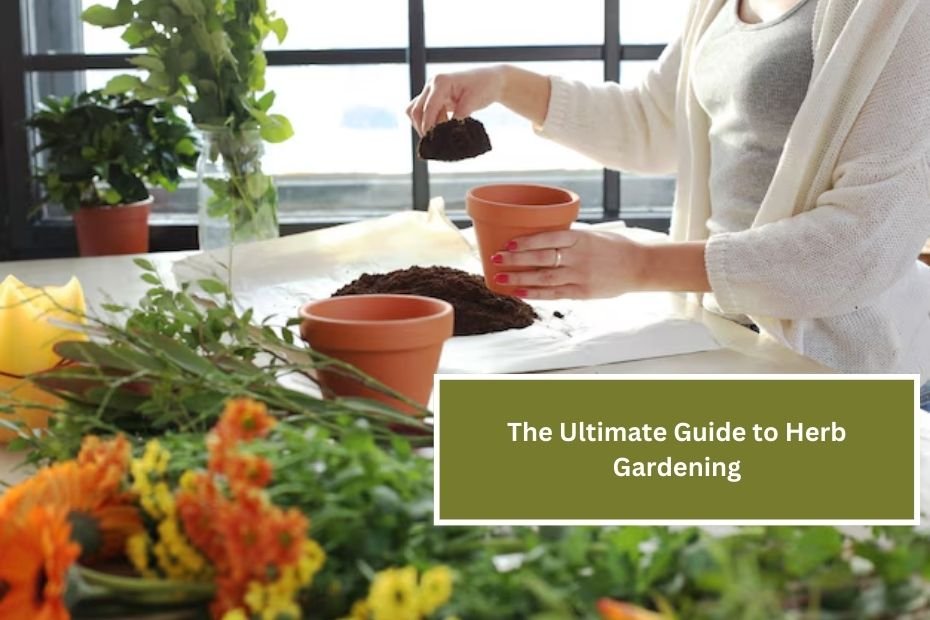Herb gardening is a rewarding and practical hobby that lets you grow flavorful and aromatic herbs right in your backyard, on your balcony, or even in a small windowsill garden. Whether you’re a beginner or an experienced gardener, herb gardening can be simple, cost-effective, and beneficial for both your cooking and health. This guide will take you through everything you need to know to start your herb garden, from choosing the right herbs to care tips for a thriving garden.
Introduction to Herb Gardening
Herbs have been used for centuries for cooking, medicinal purposes, and even as natural fragrances. What makes them popular among gardeners is their versatility. You can grow herbs in small containers, garden beds, or as part of a larger garden. Herbs like basil, mint, rosemary, and thyme are not only easy to grow but also add rich flavors to your meals. In this guide, we’ll cover:
- Benefits of herb gardening
- Choosing the right herbs
- Preparing your garden
- Planting and growing herbs
- Caring for your herb garden
- Harvesting and using herbs
Let’s dive in!
Benefits of Herb Gardening
Herb gardening comes with several benefits:
- Fresh and Organic Herbs: Growing your herbs ensures they are pesticide-free and fresh, giving you better flavors in your food.
- Cost-effective: Buying herbs at the store can be expensive, especially organic varieties. Growing your own reduces costs significantly.
- Aromatic Beauty: Many herbs have pleasant aromas, adding a sensory appeal to your garden or home.
- Health Benefits: Herbs like mint, oregano, and basil are rich in antioxidants and nutrients that contribute to a healthy diet.
- Convenience: Having fresh herbs readily available saves time and effort, making cooking more enjoyable.
Choosing the Right Herbs for Your Garden
When starting an herb garden, it’s important to choose herbs that suit your climate, space, and cooking preferences. Some herbs grow better in warm weather, while others thrive in cooler temperatures. Here are some popular herbs to consider:
1. Basil
- Basil is a summer-loving herb with a sweet and slightly spicy flavor. It’s perfect for Italian dishes like pasta and pizza.
- It grows best in full sunlight and well-drained soil.
2. Mint
- Mint is a fast-growing herb that’s perfect for teas, desserts, and salads.
- It prefers partial sunlight and should be grown in containers to prevent it from spreading too much.
3. Thyme
- Thyme has a strong, earthy flavor and is commonly used in soups, stews, and roasted meats.
- It thrives in full sunlight and sandy, well-drained soil.
4. Cilantro (Coriander)
- Cilantro is widely used in Asian and Mexican cuisines. It has a bright, citrus-like flavor.
- It grows best in cooler weather and needs regular watering.
5. Rosemary
- Rosemary has a woody aroma and is used in Mediterranean dishes.
- It prefers dry, well-drained soil and full sunlight.
6. Oregano
- Oregano is a staple herb in Italian and Greek cooking.
- It grows best in full sunlight and requires little water once established.
Preparing Your Garden
Whether you’re planting herbs in pots or garden beds, proper preparation is key to a healthy garden. Here’s how to prepare your herb garden:
1. Select a Location
- Herbs generally prefer full sunlight (at least 6-8 hours of direct sunlight a day). Make sure to choose a sunny spot for your garden.
- If growing indoors, place the pots near a sunny window or use grow lights.
2. Soil Preparation
- Most herbs thrive in well-drained soil. Mix garden soil with compost to enrich it with nutrients.
- For pots, use a high-quality potting mix to ensure good drainage.
3. Container Selection
- If space is limited, you can grow herbs in containers. Choose pots with drainage holes to prevent waterlogging.
- Group herbs with similar water and light requirements together for easy care.
Planting and Growing Herbs
Once your garden is prepared, it’s time to plant. You can grow herbs from seeds or starter plants from a nursery.
1. Starting from Seeds
- Planting seeds: Sow the seeds directly into the soil or pots. Cover them lightly with soil and water gently.
- Germination: Most herb seeds take 1-3 weeks to germinate. Keep the soil moist and provide adequate sunlight during this stage.
- Thinning: Once seedlings appear, thin them out to allow enough space for growth.
2. Using Starter Plants
- Transplanting: If using starter plants, dig a hole large enough for the root ball and place the plant in the soil. Gently press the soil around the roots.
- Spacing: Space the plants according to their growth requirements. Most herbs need about 6-12 inches between them.
3. Watering
- Herbs generally prefer moderate watering. Water the plants when the top inch of soil feels dry.
- Be cautious not to overwater, as most herbs dislike soggy soil.
4. Mulching
- Adding a thin layer of mulch around your plants helps retain moisture and keep the soil temperature stable.
Caring for Your Herb Garden
Proper care will ensure your herb garden remains healthy and productive.
1. Fertilizing
- Herbs don’t require heavy fertilization. Use organic compost or a balanced fertilizer once every 4-6 weeks.
- Over-fertilizing can cause herbs to lose flavor, so apply sparingly.
2. Pruning and Pinching
- Regularly prune or pinch off the tips of herbs like basil and mint to encourage bushy growth.
- Removing flower buds is also essential as flowering can reduce the flavor of herbs.
3. Pest Control
- Pests like aphids and spider mites can harm your herbs. Use organic methods like neem oil or insecticidal soap to keep pests at bay.
- Companion planting with flowers like marigolds can help deter pests naturally.
Harvesting and Using Herbs
Harvesting herbs at the right time ensures the best flavor. Here’s how to harvest and use them:
1. Harvesting Tips
- Harvest herbs in the morning, after the dew has dried but before the sun becomes too intense.
- For leafy herbs like basil and mint, pick the leaves from the top, which encourages new growth.
- Woody herbs like rosemary can be harvested by cutting small stems.
2. Storing Fresh Herbs
- Fresh herbs can be stored in the refrigerator wrapped in a damp paper towel, or you can place the stems in a glass of water like a bouquet.
3. Drying Herbs
- To preserve herbs for later use, you can dry them by hanging small bunches upside down in a cool, dry place.
- Once dried, store the herbs in airtight containers away from sunlight.
4. Freezing Herbs
- Some herbs, like parsley and cilantro, can be frozen in ice cube trays with a bit of water for easy use in soups and stews.
Conclusion
Herb gardening is an enjoyable and practical hobby that provides fresh, aromatic herbs for your kitchen. Whether you have a small balcony or a large garden, growing herbs can be tailored to your space and needs. By choosing the right herbs, preparing your garden properly, and following basic care tips, you can have a thriving herb garden in no time. Plus, the rewards of having fresh herbs for cooking, health, and even aromatherapy make it all worth the effort. Happy gardening!

